Superior general of the Society of Jesus facts for kids
Quick facts for kids Superior General of the Society of Jesus |
|
|---|---|

Seal of the Society of Jesus
|
|
| Formation | 19 April 1541 |
| First holder | Ignatius of Loyola |
The Superior General of the Society of Jesus is the main leader of the Society of Jesus. This is a Catholic religious group also known as the Jesuits. People usually call him Father General. He is sometimes called the Black Pope. This is because he leads the largest group of male religious members. His black clothes are a contrast to the white clothes of the pope.
The current Superior General is Father Arturo Sosa. He was chosen on October 14, 2016. He is the thirty-first person to hold this important role.
Contents
What is a Superior General?
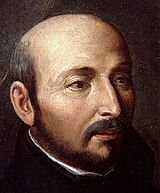
The official name in Latin is Praepositus Generalis. This means "superior general" or "president general." The word "general" is like in the military. This is because Ignatius of Loyola, who started the Jesuits, had a military background.
Other Catholic religious groups also use similar titles. For example, the Dominicans have a "master general." The Franciscans have a "minister general." The Carthusians have a "prior general."
The Jesuits are divided into smaller groups called provinces. Each province has a "provincial superior," often called "Father Provincial." The Superior General is the leader for the entire worldwide organization.
Why "Black Pope"?
"Black Pope" is an unofficial nickname for the Superior General of the Jesuits. This name comes from two reasons:
- He leads the largest Catholic group of men who are religious.
- Members of the Society, including the Superior General, wear plain black clothes.
This nickname might have started a long time ago, around the 1500s and 1600s. Some Protestant countries in Europe worried about how much power the Jesuits had. Also, like the Pope, the Superior General used to be chosen for life.
How the Superior General Leads
The Superior General has power over all members of the Society. However, he usually leads by working with the Provincial superiors under him. This power comes from the religious vows that members take. These vows connect them to community life, just like in other religious groups.
How a New Leader is Chosen
New Superiors General are chosen by a special meeting called the General Congregation of the Society. This meeting happens when the current leader resigns or passes away.
For a long time, Superiors General were chosen for life. They served until they died, just like Popes. But this has changed recently. For example, Father Pedro Arrupe resigned because he was very ill. His two successors, Father Peter Hans Kolvenbach and Father Adolfo Nicolás, also resigned.
On October 2, 2016, the 36th General Congregation met in Rome. Superior General Nicolás called this meeting. They chose Father Arturo Sosa as the thirty-first Superior General.
List of Jesuit Leaders
Before the 21st century, most Superiors General led for their whole lives. If they left office before they died, their death date is listed below the date they left office. For example, Pedro Arrupe resigned in 1983 after a stroke.
| No. | Superior General | Portrait | Took office | Left office Deceased |
Birthplace | Duration (in days) |
|---|---|---|---|---|---|---|
| 1 | Ignatius of Loyola | 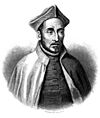 |
April 19, 1541 | July 31, 1556 | Azpeitia, Spain | 5,582 |
| 2 | Diego Laynez | 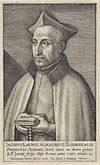 |
July 2, 1558 | January 19, 1565 | Almazán, Spain | 2,393 |
| 3 | Francis Borgia | 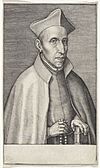 |
July 2, 1565 | October 1, 1572 | Gandia, Spain | 2,648 |
| 4 | Everard Mercurian |  |
April 23, 1573 | August 1, 1580 | La Roche-en-Ardenne, Belgium | 2,657 |
| 5 | Claudio Acquaviva |  |
February 19, 1581 | January 31, 1615 | Atri, Italy | 12,399 |
| 6 | Mutio Vitelleschi |  |
November 15, 1615 | February 9, 1645 | Rome, Italy | 10,679 |
| 7 | Vincenzo Carafa | 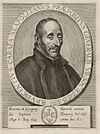 |
January 7, 1646 | June 8, 1649 | Naples, Italy | 1,248 |
| 8 | Francesco Piccolomini | 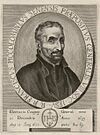 |
December 21, 1649 | June 17, 1651 | Siena, Italy | 543 |
| 9 | Aloysius Gottifredi |  |
January 21, 1652 | March 12, 1652 | Rome, Italy | 51 |
| 10 | Goschwin Nickel | 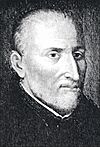 |
March 17, 1652 | July 31, 1664 | Jülich, Germany | 4,519 |
| 11 | Giovanni Paolo Oliva | 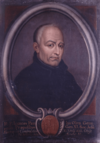 |
July 31, 1664 | November 26, 1681 | Genoa, Italy | 6,327 |
| 12 | Charles de Noyelle | 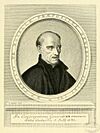 |
July 5, 1682 | December 12, 1686 | Brussels, Belgium | 1,621 |
| 13 | Thyrsus González de Santalla | 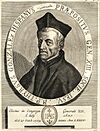 |
July 6, 1687 | October 27, 1705 | Arganza, Spain | 6,688 |
| 14 | Michelangelo Tamburini | 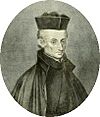 |
January 31, 1706 | February 28, 1730 | Modena, Italy | 8,521 |
| 15 | Franz Retz | 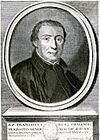 |
March 7, 1730 | November 19, 1750 | Prague, Bohemia | 7,562 |
| 16 | Ignacio Visconti | 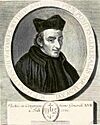 |
July 4, 1751 | May 4, 1755 | Milan, Italy | 1,389 |
| 17 | Aloysius Centurione | 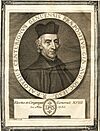 |
November 30, 1755 | October 2, 1757 | Genoa, Italy | 672 |
| 18 | Lorenzo Ricci | 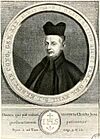 |
May 21, 1758 | August 16, 1773 24 November 1775 21 July 1773 (suppressed) |
Florence, Italy | 5,566 |
| — | Stanislaus Czerniewicz | 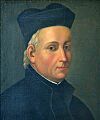 |
October 17, 1782 | October 21, 1785 | Kaunas, Polish–Lithuanian Commonwealth | 1,100 |
| — | Gabriel Lenkiewicz | October 8, 1785 | October 21, 1798 | Polotsk, Polish–Lithuanian Commonwealth | 4,761 | |
| — | Franciszek Kareu | 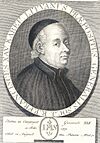 |
February 12, 1799 | August 11, 1802 | Orsha, Polish–Lithuanian Commonwealth | 1,275 |
| — | Gabriel Gruber |  |
October 22, 1802 | April 6, 1805 | Vienna, Austria | 897 |
| 19 | Tadeusz Brzozowski |  |
August 7, 1814 | February 5, 1820 | Königsberg, Prussia | 2,008 |
| 20 | Luigi Fortis | 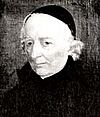 |
October 18, 1820 | January 27, 1829 | Verona, Italy | 3,023 |
| 21 | Jan Roothaan | 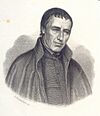 |
July 9, 1829 | May 8, 1853 | Amsterdam, Netherlands | 8,704 |
| 22 | Peter Jan Beckx | 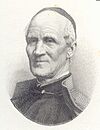 |
August 2, 1853 | March 4, 1887 | Scherpenheuvel-Zichem, Belgium | 12,267 |
| 23 | Anton Anderledy | 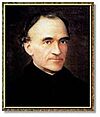 |
March 4, 1887 | January 18, 1892 | Berisal, Switzerland | 1,781 |
| 24 | Luis Martín | 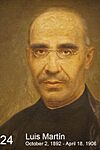 |
October 2, 1892 | April 18, 1906 | Melgar de Fernamental, Spain | 4,945 |
| 25 | Franz Xavier Wernz |  |
September 8, 1906 | August 20, 1914 | Rottweil, Germany | 2,903 |
| 26 | Wlodimir Ledóchowski |
.
|
February 11, 1915 | December 13, 1942 | Loosdorf, Austria | 10,167 |
| 27 | Jean-Baptiste Janssens |  |
September 15, 1946 | October 5, 1964 | Mechelen, Belgium | 6,595 |
| 28 | Pedro Arrupe | 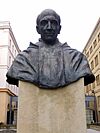 |
May 22, 1965 | September 3, 1983 5 February 1991 |
Bilbao, Spain | 6,678 |
| 29 | Peter Hans Kolvenbach |  |
September 13, 1983 | January 14, 2008 26 November 2016 |
Druten, Netherlands | 8,889 |
| 30 | Adolfo Nicolás |  |
January 19, 2008 | October 3, 2016 20 May 2020 |
Villamuriel de Cerrato, Spain | 3,169 |
| 31 | Arturo Sosa | 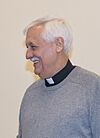 |
October 14, 2016 | Incumbent | Caracas, Venezuela | 3,342 |
Leaders During a Difficult Time
In 1773, the Jesuits were temporarily stopped by Pope Clement XIV. This was done through a special order called Dominus ac Redemptor. It was issued on July 21, 1773, and put into effect on August 16.
In some countries, the Pope's order was not fully followed. The leaders of the Jesuits in these places were called temporary Vicars General.
The temporary Vicars General were:
- Stanislaus Czerniewicz (October 17, 1782 – October 21, 1785)
- Gabriel Lenkiewicz (October 8, 1785 – October 21, 1798)
- Franciszek Kareu (February 12, 1799 – March 7, 1801)
On March 7, 1801, Pope Pius VII allowed the Jesuits to exist in Russia. He let them choose a Superior General just for Russia. This was the first step toward the Society being fully brought back.
The Superiors General in Russia were:
- Franciszek Kareu (March 7, 1801 – August 11, 1802)
- Gabriel Gruber (October 22, 1802 – April 6, 1805)
- Tadeusz Brzozowski (September 14, 1805 – August 7, 1814)
The Jesuit order was fully brought back on August 7, 1814. This happened through another special order from Pope Pius VII called Sollicitudo omnium ecclesiarum.
See also
 In Spanish: Superior general de la Compañía de Jesús para niños
In Spanish: Superior general de la Compañía de Jesús para niños
- Admonitor (Jesuits)



